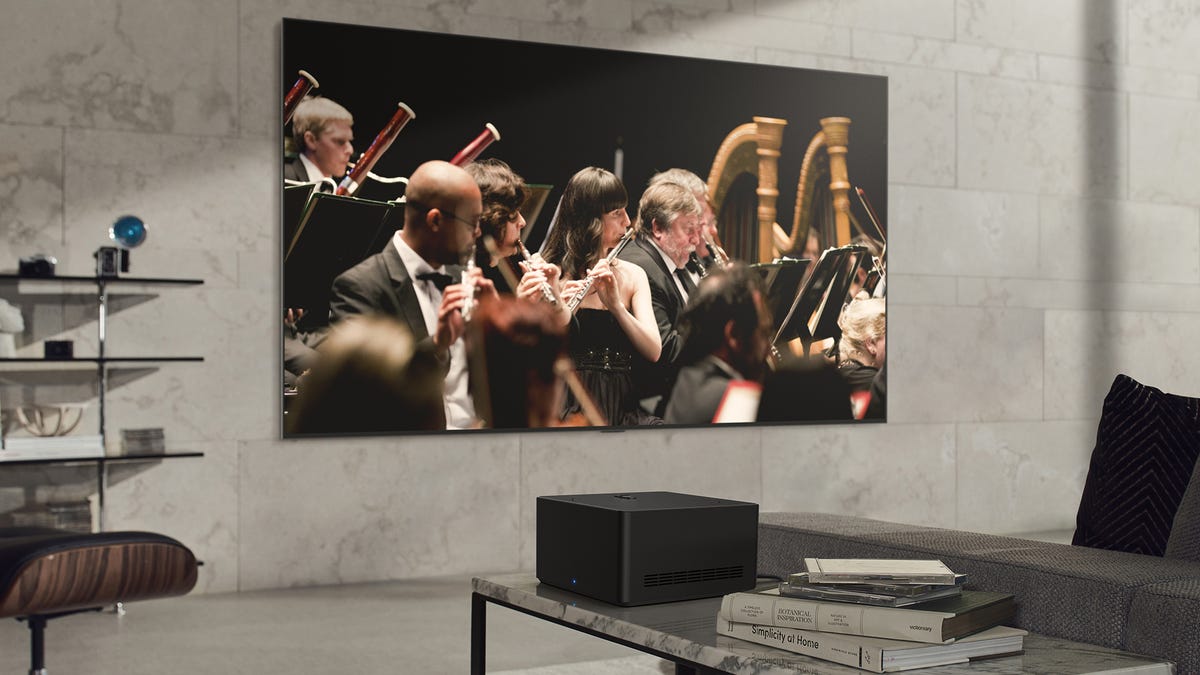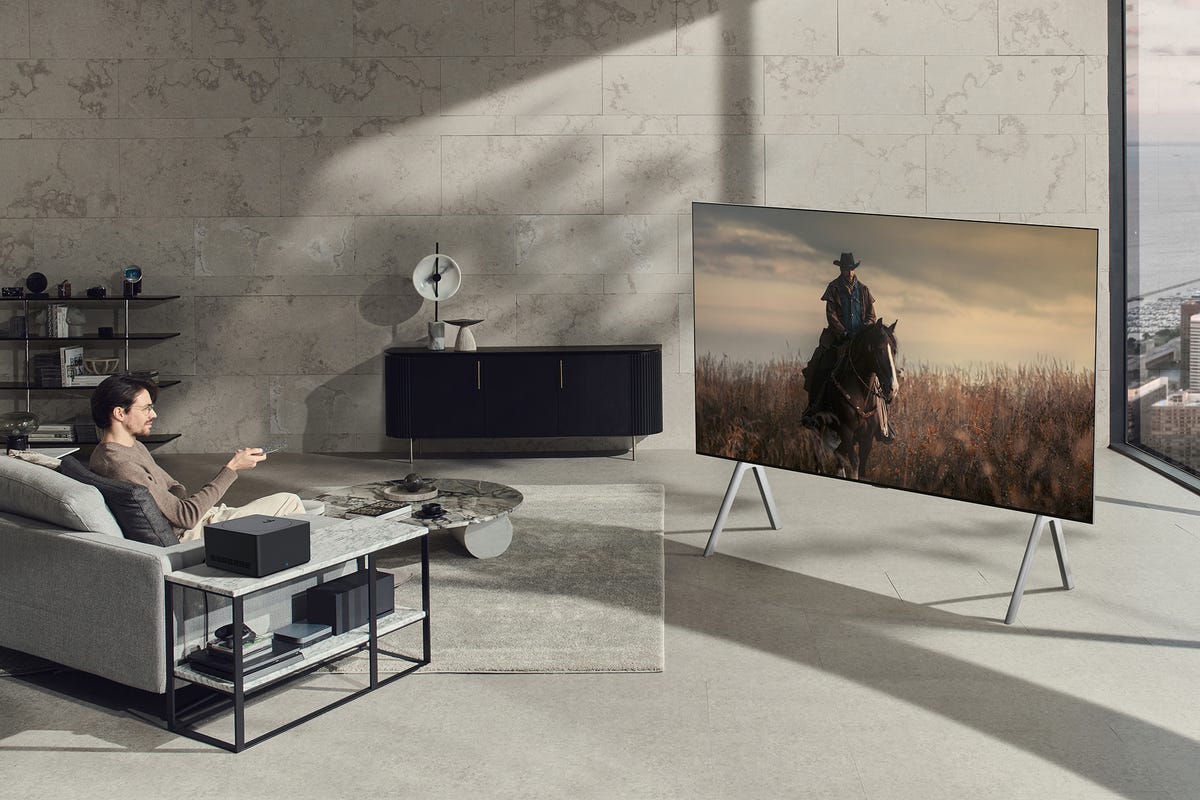
LG
![]()
I’ve been covering TVs at CES for years and it takes a lot to surprise me. Yes I’ve seen some crazy screens, ones that roll up and ones so big they’re basically video walls, but early versions and prototypes prepared me for those. When I walked into LG’s suite at a hotel in Las Vegas, the thing I saw across the room came as a big surprise.
And I do mean big. It’s a 97-inch OLED TV, which I first saw when LG introduced it last year, and it remains the biggest OLED TV in the world. And since OLED provides the best picture quality available, it’s damn impressive in-person at that size. But that wasn’t the surprise. To me the jaw-dropper came when LG’s rep told me the beautiful, massive 4K image was being beamed to the TV without any wires. Wireless TV is real, and it’s coming this year.
Across the room from the TV sat the wireless transmitter box. On the back of the box were standard HDMI plugs and a handful of other connections, and one HDMI cable ran to a Blu-ray player. The image on the screen was from a Blu-Ray disc, sent wirelessly — and flawlessly, to my eye — from the box to the TV. The top of the box can be rotated to aim an internal antenna at the television.
The TV itself didn’t have any video inputs at all, just blank metal where TV inputs usually reside around back. The idea is to reduce wiring, that age-old bugaboo of nice TV installations. You, person who can afford a 97-inch OLED TV, stash your AV gear inside a cabinet out of sight, along with the transmitter box into which everything plugs. That leaves only the power cord to the TV, a wire LG artfully hid inside one of the stand legs.


No wires or devices nearby means a stand like this can be used to its full potential. Note that unlike this image, the real wireless TV does have a power cord.
LG
Sure, any number of TV stands can also hold your gear. But wireless connectivity allows the TV to stand alone, which looks impressive on one of LG’s easel-like stands (pictured above) and it can greatly simplify a wall-mount installation.
LG says the box can be located up to 30 feet from the TV. I asked whether the wireless connection was a potential hazard, especially if you’re sitting between the box and the TV, and company representatives told me it wasn’t because it uses similar technology to standard Wi-Fi routers. They also said it wouldn’t be affected by other Wi-Fi traffic. The signal can handle up to 4K, 120Hz resolution, which is pretty much the maximum for today’s games. It’s also the highest resolution and framerate most TVs, including LG’s normal 4K OLED models, can accept.
Wireless TVs have been sold in the past, and wireless tech has appeared in projectors too. You can also buy wireless HDMI extender kits for $100 or less, but they generally can’t handle such high bandwidth. This is the first time in years I’ve seen it built into a TV. A company called Displace TV also showed a wireless OLED model at CES, but it’s a 55-inch, battery-powered screen that’s designed for portability.
In addition to the 97-inch size LG will release its wireless OLED, dubbed the M3 series, in 83- and 77-inch sizes. LG says it’s coming sometime in 2023 with pricing, like the rest of LG’s 2023 TVs, still to be determined. For reference, LG charges $25,000 for its standard, wired 97-inch OLED TV and $2,900 for a 77-inch one, so regardless of size the M3 won’t be cheap.
Aside from the M3 LG also introduced three other series of wired OLED TVs at CES 2023.
